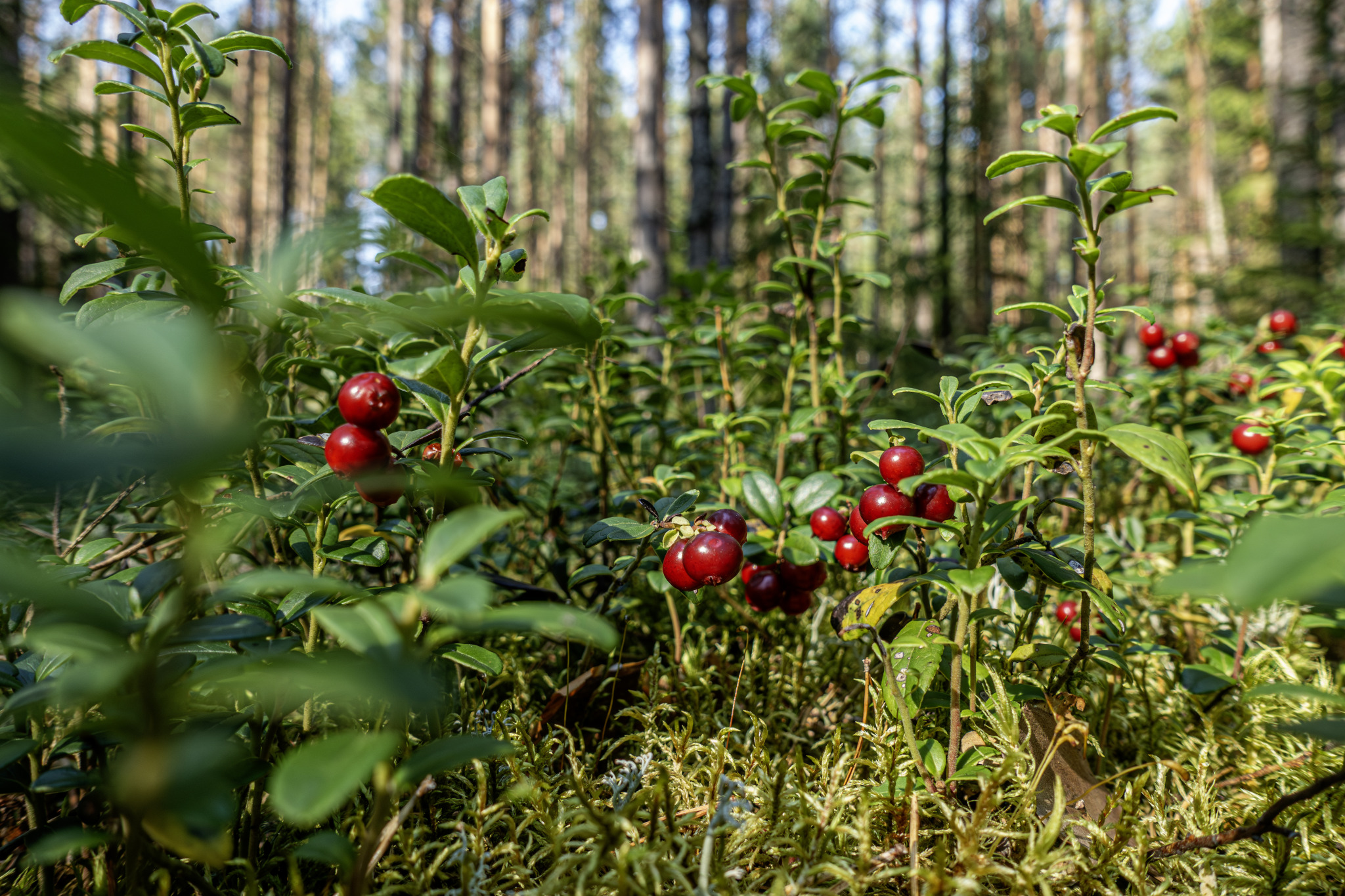The Lingonberry (Vaccinium vitis-idaea), also known by several other names such as partridgeberry, mountain cranberry, or cowberry, is a small, evergreen shrub in the heath family (Ericaceae). It is native to boreal forests and Arctic tundra throughout the Northern Hemisphere, including North America, Europe, and Asia.
Description
- Plant Size:
- Lingonberry plants are low-growing, typically reaching about 10 to 40 centimeters (4 to 16 inches) in height. They form dense, spreading mats that can cover significant ground areas.
- Leaves:
- The leaves are small, leathery, and oval-shaped, measuring about 5 to 30 millimeters in length. They are dark green, glossy on the upper surface, and lighter underneath. The edges of the leaves are slightly rolled under, which is a characteristic feature.
- Flowers:
- The flowers are small, bell-shaped, and usually white or pale pink. They are borne in clusters at the ends of the branches. Flowering typically occurs in late spring to early summer.
- Fruit:
- The fruit is a small, round, bright red berry, about 5 to 10 millimeters in diameter. The berries ripen in late summer to early autumn and are known for their tart taste. Lingonberries are rich in vitamins, especially vitamin C, and have been traditionally used in various culinary and medicinal applications.
Habitat and Distribution
- Native Range:
- Lingonberries are native to the cold regions of the Northern Hemisphere, including the boreal forests of Scandinavia, Siberia, Canada, and Alaska. They are well-adapted to the acidic soils found in these areas.
- Habitat:
- The plant thrives in a variety of habitats, including coniferous forests, heathlands, and alpine tundra. It prefers well-drained, acidic soils and can be found in both lowland and mountainous regions.
Ecological Role
- Pollination:
- Lingonberries are primarily pollinated by bees. The flowers attract various species of bees, which play a critical role in ensuring the plant’s reproduction.
- Wildlife Food:
- The berries are an important food source for various wildlife, including birds, bears, and small mammals. The evergreen leaves also provide cover for small animals in the winter.
Human Uses
- Culinary:
- Lingonberries are popular in Scandinavian and Eastern European cuisines. The tart berries are often made into jams, jellies, syrups, and sauces. They are traditionally served with meat dishes, such as Swedish meatballs, and are also used in desserts and beverages.
- In addition to fresh and preserved uses, lingonberries are sometimes dried or used as a flavoring in baked goods.
- Medicinal:
- Traditionally, lingonberries have been used in folk medicine for their antiseptic properties. They are believed to have health benefits, including supporting urinary tract health and providing antioxidant effects due to their high vitamin C and polyphenol content.
- Commercial Cultivation:
- Lingonberries are cultivated on a commercial scale, especially in Scandinavia and Russia, where they are harvested for both domestic consumption and export. They are also grown as an ornamental ground cover due to their attractive foliage and berries.
Conservation
- Status:
- Lingonberries are not considered endangered and are abundant throughout their natural range. They are a resilient species, able to thrive in harsh climates and poor soils.
- Environmental Impact:
- Lingonberries contribute to the stability of the ecosystems where they grow by providing food for wildlife and contributing to soil health through their dense mat-like growth, which helps prevent erosion.
Summary
The Lingonberry (Vaccinium vitis-idaea) is a versatile, evergreen shrub known for its bright red, tart berries. It plays a significant role in both the ecosystem and human culture, particularly in northern regions where it is native. Whether used in traditional dishes, valued for its medicinal properties, or simply appreciated for its ecological contributions, the lingonberry is a remarkable plant with a broad range of uses and benefits.
Views: 198
Subscribe to the newsletter:
